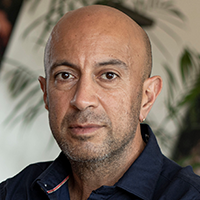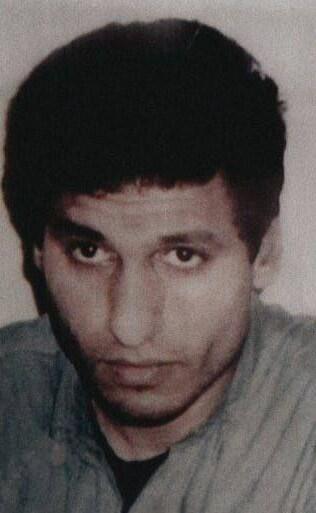If Hamas' military chief Mohammed Deif was indeed killed in the strike in the Al-Mawasi area west of Khan Younis, it would be one of the most significant events in the war since it began more than nine months ago.
In fact, this would be the hardest operational, symbolic and psychological blow Hamas has suffered since Deif himself declared war on the State of Israel on October 7, 2023, shortly after 7:00 AM, in a voice message broadcast on Al Jazeera.
Deif is no Marwan Issa, the organization's third-in-command who was killed a few months ago, nor even Ahmed Al-Jabari, who stepped into Deif's shoes after he was injured in one of the attempts on his life.
Deif stood above all, partly because he survived so many assassination attempts, and perhaps also due to his longevity. He had been wanted since the early 1990s, and his picture has been appearing in the wanted lists of IDF units operating in the West Bank and Gaza for 31 years (we too, as fighters in the Duvdevan unit operating in the West Bank, searched for him even during the early years of Hamas' military wing).
But Deif stood out not only because he seemed to have nine lives like a cat but also because of his unique qualities. Similar to Imad Mughniyeh in Hezbollah, Deif was both a field operative and a strategist, a military instructor, and a sort of supreme commander overseeing military procurement, training, intelligence and, of course, attacks and operations. This was despite suffering physical injuries from the various assassination attempts he survived.
Shortly after Operation Protective Edge, during which his wife and son were killed in an attempt on his life, a senior IDF Southern Command officer reported that Deif had returned to firmly command the military wing.
It may have been the heavy military pressure exerted by Israel in Rafah and the Tel al-Sultan neighborhood that led Hamas to evacuate him and Rafa Salama, the Khan Younis Brigade commander, to a fenced compound visible to passersby
His devious mind was behind the attack on October 7, but also the tunnels, rockets and more. He was the one who mapped out the "roadmap" for the military wing from its inception to the present day. He was responsible for transforming a small terror group into a trained terror army capable of capturing an Israeli settlement and holding hundreds of Israeli hostages. However, even Deif makes mistakes.
It may have been the heavy military pressure exerted by Israel in Rafah and the Tel al-Sultan neighborhood that led Hamas to evacuate him and Rafa Salama, the Khan Younis Brigade commander, to a fenced compound visible to passersby—an above-ground compound near thousands of refugees who fled to the Al-Mawasi area.
It might have been another consideration that is not entirely clear at this stage. But thanks to a mistake and through an operation involving complex intelligence gathering, Israeli intelligence agencies, Military Intelligence and Shin Bet, managed to close in on Deif and pinpoint his location. From there, the path to the airstrike was short.
The attack also possibly killed Palestinian civilians, but this is a man who never regarded the lives of his own people as particularly valuable—and he chose to position himself near an area sheltering many refugees.
It can also be cautiously predicted that these talks, if indeed halted, will resume—this time with Hamas more motivated to end the war, understanding that Israeli intelligence has recently succeeded in penetrating and targeting the organization's military leadership in ways it couldn't before October 7 and in the initial months following.
If Deif was indeed liquidated, a successor will be appointed in the coming days. It's even possible that Yahya Sinwar, Hamas' political leader in Gaza and Deif's friend, will appoint another senior figure to the role.
Nevertheless, Hamas' military wing finds itself in a tough spot, with almost all of its senior leaders either eliminated or injured, and its leader hiding in one of Gaza's tunnels, likely surrounded by hostages. Sinwar will struggle to function effectively, and the military wing is no longer operating as an organized, hierarchical entity. Its capabilities are degrading, and this trend will continue as long as the war persists.
It can be cautiously estimated that Saturday's strike will not lead to a breakthrough in the hostage release negotiations—quite the opposite. Hamas, wanting to project strength, is likely to announce a halt to the negotiations.
However, it can also be cautiously predicted that these talks, if indeed halted, will resume—this time with Hamas more motivated to end the war, understanding that Israeli intelligence has recently succeeded in penetrating and targeting the organization's military leadership in ways it couldn't before October 7 and in the initial months following.




